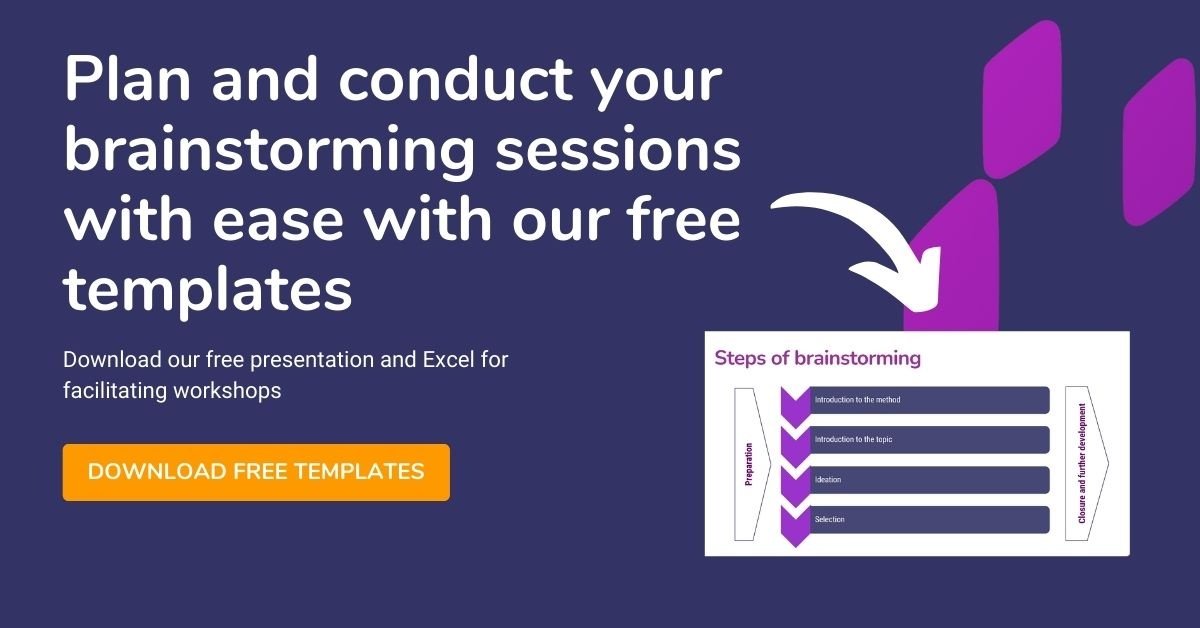Brainstorming is an important part of any group collaboration, but it can feel like a chore if done improperly. Unsuccessful brainstorming sessions can leave the group feeling drained, frustrated, and unaccomplished. On the other hand, effective brainstorming sessions boost the group’s overall morale, energy levels, and confidence.
While it may be attractive to simply throw ideas at the wall to see what sticks, this can lead to confusion and derision among participants. Brainstorming requires planning and structure in order to be effective. Here are some popular and proven brainstorming techniques for groups that can lead to stronger collaboration, and with that, better results.
Figure Storming
Sometimes, team members are reluctant to bring forth their own ideas for fear of rejection or mockery. Other times, members of the group simply can’t figure out how they would approach a particular subject on their own. In these cases, figure storming can be an effective brainstorming technique.
Figure storming is the process of choosing a prominent figure from outside the group and speculating on how they might tackle the situation. The figure could come from within the organization, such as a boss or CEO, or from the outside world like a celebrity, industry leader, or historical figure.
Figure storming can be effective because it forces team members to entertain external perspectives. Teams that have worked together for years may find that they have begun to think alike, making creativity more difficult. Figure storming can bring a new wave of creativity to the group as they consider outside thought processes.
Role Storming
Role storming is quite similar brainstorming technique to figure storming, but instead of just discussing another figure, team members actually act out scenarios as these figures.
This is a helpful brainstorming method because it allows individuals to attribute ideas to somebody else if they aren’t confident in their own solutions. It can also be a fun, stimulating way for individuals to interact with one another if they are new to the group or if brainstorming sessions have become stale.
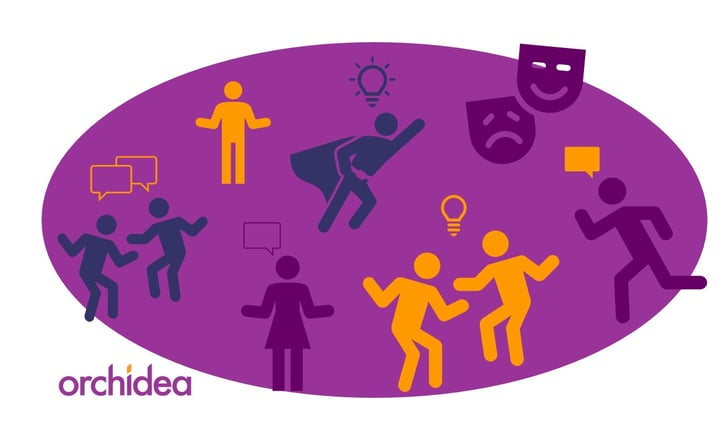
Brainwriting
Round table discussions can be problematic as they may favor senior members of the team or encourage bias based on personal relationships. With brainwriting, these biases are eliminated – or at least mitigated – by providing anonymity and equal airtime.
Brainwriting is an advanced method of brainstorming. It differs from brainstorming mainly because it is a written and anonymous idea-generation technique while brainstorming is an oral one. Sometimes one might work better than the other in your idea-generating process so you can use brainwriting as an alternative to a traditional brainstorming technique.
Brainwriting requires the leader to share a topic on which team members will share their opinions and ideas. However, participants do not share these ideas verbally. Instead, they write them down individually during a quiet, distraction-free period. These writings are then given to the leader – without names attached – who will facilitate discussion for each idea and encourage input from every team member.
Brainwriting helps the group thrive because it gives a voice to newer or less vocal members. It also prevents members from internal biases that they might have based on their perception of particular people. This means that every idea is brought to the table as equal and won’t start out with any systemic advantages or disadvantages over the others.
If you want to learn more about the brainwriting method and different techniques, read our blog post: How to generate ideas with brainwriting?.
Collaborative Brainwriting
Brainwriting can be taken a step further by encouraging silent collaboration on each individual’s ideas. In collaborative brainwriting, the discussion is not started immediately after the ideas are written down. Instead, each idea is passed anonymously to another team member who brings their plan to build upon the original idea. The team leader can set a specific period of time or wait until the group feels that they have collaborated enough.
Brainwriting gets rid of internal biases at the beginning, but the discussion can lead to these prejudices coming back to the surface. Collaborative brainwriting provides even more anonymity and forces people to cooperate with every team member, even if they wouldn’t do so naturally during discussion.
Rapid Ideation
Groups don’t always have a lot of time to brainstorm, so sometimes more efficient brainstorming methods are required. Rapid ideation can help teams overcome challenging deadlines by entertaining as many ideas as possible in a short period of time.
To begin, the group leader briefs the group on the topic and sets a timer. During this time, group members write down as many thoughts as possible, no matter how relevant they may or may not seem. These can be written on a whiteboard, index cards, notepads – pretty much anything with the capacity to hold words. Note that there are also many helpful online brainstorming tools you can benefit from.
Rapid ideation helps bring any possible concepts to the table – no matter how far-fetched they may sound. By enacting a strict time limit, individuals are forced to shed their apprehension about their own ideas. In rapid ideation, there are no silly concepts. Most ideas will likely be discarded during the discussion, but the practice of writing down as many ideas as possible means that the group has more chances to find those that will inspire progress.
This is an excellent brainstorming technique for groups who often get caught up in the details of any given topic. It allows members to take a breath and stop overthinking, focusing on idea creation rather than in-depth analysis.

Starbursting
Sometimes, individuals get caught up in trying to find a solution before they have enough relevant information. This hasty approach to problem-solving leads to incomplete answers and often ends without any real solution at all. This is where starbursting technique can help.
Starbursting involves coming up with more questions about the topic at hand before attempting to provide any answers. The team should focus on every aspect of the situation – the who, why, what, where, how, and when. This helps the team investigate every angle of the topic and bring up new concerns that may be overlooked in other brainstorming sessions.
Depending on the length of the starbursting session, the leader may decide to let the group sit on the questions until the next brainstorm. Jumping to answer the questions too quickly may cause exhaustion and allowing some time to absorb them can be beneficial in the long run.
Stepladder Technique
Like brainwriting, the stepladder technique attempts to avoid uneven influence from more tenured or louder members of the team. It intends to allow individual contributions to be heard fairly and to bring these contributions together for good of the entire collaboration.
The team leader or facilitator first shares a question, concern, or topic with the entire team. After that, all but two team members are asked to leave the room. The two that are left in the room must discuss the topic one on one and record their thoughts and findings. Outside the room, individuals continue to quietly write down their own ideas without interacting with other members.
After a short period of time, one individual comes back into the room, ready to discuss his or her ideas before discussing those of the other two members. Team members come back into the room one at a time, and individual ideas are heard before newfound group ideas.
The stepladder technique ensures that every team member has a voice while discouraging groupthink that might occur in a round table discussion. It allows for fair discussion about a topic and prevents certain members from having too much power over the brainstorming session.
Reverse Brainstorming
The traditional brainstorming technique is focused on solving problems within an organization. This, of course, is extremely important but can lead to a linear, reactionary way of thinking. It is not enough to solve problems after they occur – teams must be focused on preventing the situations that lead to these problems.
Reverse brainstorming sessions attempt to do just that. The leader will ask the group what they could do to cause a problem or to make a current problem even worse. Essentially, team members are focused on doing the opposite of what is good for the organization.
Reverse brainstorming can be useful for groups who are finding it difficult to come up with solutions for a particular problem. By coming up with ways to make it worse, they can move backward from the hypothetical catastrophe and continue on the path toward progress. These potential disaster scenarios might trigger new ideas about how to reverse them.
Round Robin Brainstorming
Like a round-robin tournament in sports, Round Robin Brainstorming requires participation from every group member. The team leader will supply a topic or question, and each individual will be required to share one thought or idea. Everybody must wait until all other individuals have shared their ideas before inserting another thought into the discussion or giving their input on somebody else’s idea.
Round Robin Brainstorming allows the less vocal members of the group to get their word in before other members can give feedback. Therefore it is an excellent brainstorming technique for shyer or newer members who may not be ready to put forth bold concepts. It also ensures that senior members aren’t too hasty to attack ideas that they don’t immediately agree with. They must wait until everybody has had their say before pushing back or lobbying for their own ideas.
Change of Scenery
This isn’t exactly a brainstorming technique, but it is something that can be done to improve morale and encourage creativity. Sitting in a room for every brainstorming session can become boring and repetitive. By bringing the group somewhere else – outside into nature, to a restaurant, or even just to another part of the building – group members will feel energized and motivated.
The five whys analysis
Sakichi Toyoda created the 5 whys analysis in the 1950s. It was originally a method made for Toyota and they are still using it in problem-solving. It has become more popular since and it is now used by some of the largest companies in the world.
The five whys analysis is an excellent technique to get to the root of the issue. In this method, you simply ask “Why?” until you find the root cause of the problem. The goal is to find the counter-measure, i.e. a set of actions to prevent the issue from happening again.
To use a five whys analysis, gather a team of people who are familiar with the issue and choose a facilitator. Then, define the problem you’re going to solve. Then it’s time to start asking the whys. First, ask why the problem happens and write down the answer. Then, ask why again as many times as needed to get to the root of the problem. When you have found the cause of the problem, take necessary corrective actions to prevent the problem from recurring.
This technique is especially good for identifying the root of a problem. It is also a very easy and effective method to get in-depth solutions for solving problems.
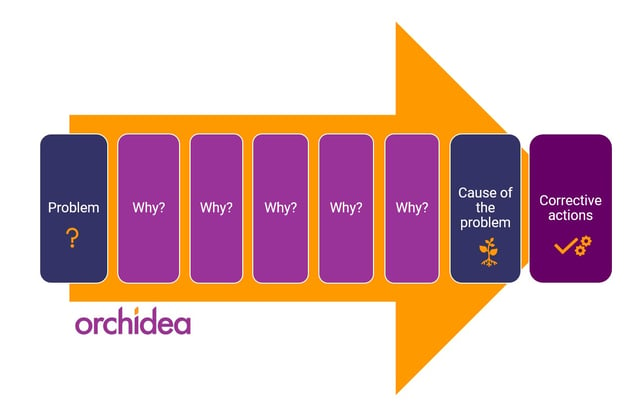
SWOT analysis
SWOT analysis means the analysis of strengths, weaknesses, opportunities, and threats you may face. The SWOT framework is used for identifying those four primary factors, the potential of the business, and the external problems that may limit the performance.
To run a SWOT analysis, collect a team of diverse people across the company and have them brainstorm the strengths, weaknesses, opportunities, and threats. Focus well on each section of the analysis, and ask questions like what do we do well, what could be improved, are there trends that might affect our business, etc.
When you have gathered a detailed analysis of all the categories, you can then start brainstorming solutions for the issues you found. It is very important to have a SWOT analysis done and update it regularly to know where your business stands.
Brain netting (brainstorming online)
It is important to have brainstorming sessions, even if your team is working remotely. You can conduct your brainstorming session online in a remote meeting as well as in a physical location. Sometimes it is easier to have the brainstorming session online and not to try bringing everyone together to one place at the same time.
Overall brain netting is a quite similar technique to traditional brainstorming. It is important to find a functional and convenient virtual brainstorming tool to make your session easy and effective. Our recommendation for digital brainstorming is AI-powered brainstorming tool Orchidea Workshop.
There are many different brainstorming tools online and brainstorming software you can use, as well as remote meeting tools. The benefits of the brainstorming software are that the ideas stay recorded. Also, ideas are often generated in less time than in a classic brainstorming session.
So, gather your team, choose a brainstorming software, and start brainstorming online!
Start brainstorming with Orchidea Workshop here for free!
Mind mapping
A mind map is a diagram for structuring information like different concepts. A mind map shows hierarchical structure and connections among the pieces. Mind mapping is a visual way to brainstorm. It is very useful in grouping ideas and connecting them. You can use mind maps during the brainstorming sessions to organize and analyze information visually.
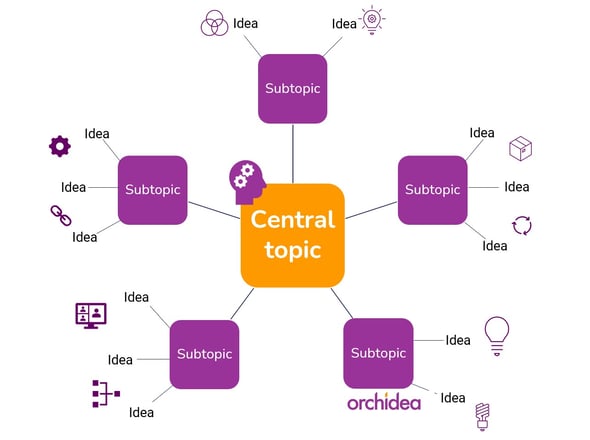
For mind mapping, you need a pen and paper or a whiteboard. First, write your main topic down and add related subtopics and issues. Then start growing your mind map by adding more issues to the subtopics or by adding new categories. You can use symbols, images, colors, or other graphical elements to get your creativity flowing.
With mind mapping, you can capture everyone’s thoughts, build on them, and visualize the connections of ideas.
Charette Procedure
Charette procedure is a brainstorming technique to consider when you have a large group or multiple topics to discuss. With a large group, there is a risk that not everyone contributes, or it is harder to control the session when there are many people bouncing ideas.
In this technique, people are divided into smaller groups. Small groups start brainstorming about a specific topic. After a while, the next group moves to discuss that topic and build on the existing ideas.
When all the groups have discussed the topic or topics, the outcomes are discussed and shared with everyone.
Gap filling
In Gap filling or Gap Analysis, the goal is to brainstorm ways to reach the goal. Gap Filling starts with identifying the current state and the goal where you want to be. Then you start filling in the gap between them.
The participants brainstorm ideas to reach that goal and all the ideas are collected. After that, the ideas will be organized and developed into a course or an action to start going toward the goal.
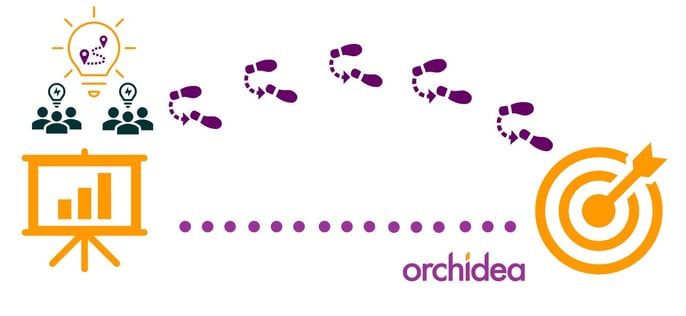
Conclusion
I hope these brainstorming techniques help you boost innovation and stronger collaboration. Keep in mind, these are just some of the best brainstorming techniques used and some of them might work better for your team than others.
Do you have experience with different brainstorming techniques? Or have you found some technique to be working particularly well? Share your thoughts and experiences in the comments below.






